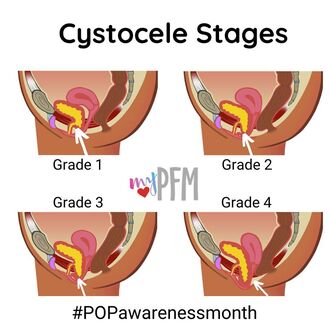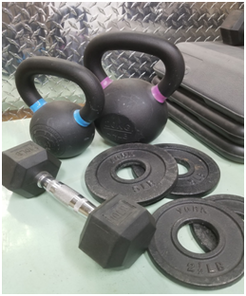
POP can occur due to a variety of things, such as pregnancy or heavy lifting. These are activities we shouldn't shy away form, rather recognize. Pelvic organ prolapse is related to the descent of a pelvic organ, including the bladder, uterus or rectum, into the vaginal space. For example, the bladder will descend into the vaginal space as the anterior vaginal wall loses it's ability to create support. Tissue can become visible at the opening of the vagina. The infographic from My PFM is a great visual of a cystocele, or prolapse of the bladder.
The thought of a POP can be quite concerning for anyone. Not only the symptoms but what you may hear or read regarding activity of what can or should not be done. However, everything you hear or read should be discussed with your healthcare provider.
Research has demonstrated that pelvic floor muscle retraining is key in assisting the recovery from POP. Like most injuries, the rehabilitation process is important to assist with a return to activity and quality of life.
Symptoms can include:
- lower back pain
- urinary urgency
- pelvic pressure or heaviness
- a bulge seen at the opening of the vagina.
Treatment can include numerous strategies, such as pelvic floor muscle retraining from an internal or external technique, breath control and pressure control, and overall global conditioning. Exercise and education are key. Having a healthcare provider, such as a Pelvic Health Physiotherapist as part of your team, will assist with your overall rehabilitation process and return to activities.
We are hear to help with any questions you may have. Please reach out for a chat!
~ Michelle, Physiotherapist
References:
https://www.mypfm.com/prolapse




 RSS Feed
RSS Feed